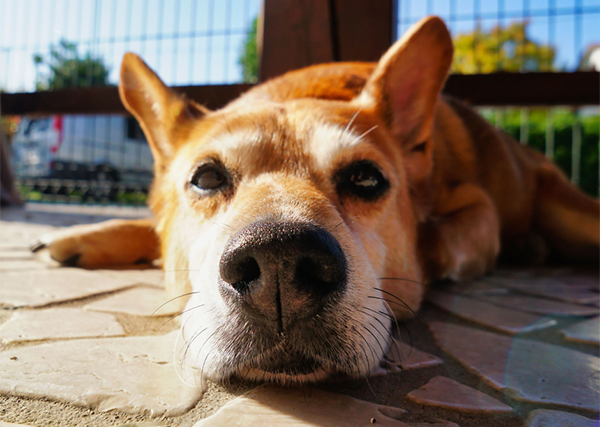Have you ever seen your furry friend panting excessively on a hot summer day? It might be more than just a normal reaction to heat. Heat stroke in animals is a serious and potentially life-threatening condition that can sneak up on their owners. As temperatures rise, it’s crucial to know the signs and symptoms to look for, that could save your pet’s life.
Imagine the distress of watching your beloved companion suffer without knowing how to help. Don’t let that be you! By understanding the telltale signs of heat stroke, you’ll be equipped to spot trouble early and take action fast. From subtle behavioral changes to alarming physical symptoms, this guide will walk you through everything you need to know to keep your pets safe and cool.
Understanding Heat Stroke in Animals
Heat stroke in animals occurs when their body temperature rises to dangerous levels, typically above 40°C. This condition results from an inability to regulate body temperature effectively in hot environments.
Causes include prolonged exposure to high temperatures, lack of access to water and/or shade, excessive exercise in hot weather and poor ventilation in enclosed spaces.
IMPORTANT NOTE
While most animals can suffer from heat stroke, some species are more susceptible, including dogs, birds, horses and cats.
Importance of early detection
Early detection of heat stroke is crucial for several reasons:
- Rapid progression – Heat stroke can escalate quickly, leading to organ failure
- Higher survival rates – Prompt treatment significantly improves outcomes
- Prevention of long-term damage – Early intervention reduces the risk of lasting effects
- Easier treatment – Mild cases are simpler to manage than severe ones
You should familiarise yourself with the signs of heat stroke in your pets or livestock. By recognising the early symptoms, you can take immediate action to cool your animal and seek veterinary care. This knowledge could mean the difference between a quick recovery and a life-threatening situation.
Common Signs of Heat Stroke
As the temperature rises, it’s crucial to be aware of the common signs of heat stroke in animals. Recognising these symptoms early can be life-saving for your furry and feathered friends. Let’s explore the key indicators you should watch out for:
1. BEHAVIOURAL CHANGES
As you learn about heat stroke in animals, it’s crucial to recognise the behavioral changes that can indicate your pet is struggling with heat. By being aware of these signs, you can take swift action to prevent a potentially life-threatening situation.
Reluctance to move or exercise – You might notice your usually energetic pet becoming lethargic or weak. Pay attention to pets refusing to play fetch or engage in other games, lying down frequently during walks, or showing disinterest in toys or treats.
Seeking shade or cool surfaces – Animals instinctively try to cool themselves down when overheated. You may observe your pet spending more time in shaded areas, lying on cool tiles or concrete floors, or attempting to dig holes in the ground to find cooler soil.
Increased agitation or restlessness – Heat can make animals uncomfortable and anxious. Watch for pacing back and forth, difficulty settling down or not being able to find a comfortable position.
2. EXCESSIVE PANTING AND DROOLING
You may notice your pet’s breathing becoming rapid and labored. Their tongue may hang out more than usual, and they may produce an excessive amount of saliva – this is your pet’s attempt to cool down through evaporation.
3. RAPID HEART RATE AND BREATHING
You may observe an increase in your pet’s heart rate. Their chest may visibly move faster with breaths as they struggle to regulate their body temperature.
4. VOMITING OR DIARRHEA
Heat stroke can cause gastrointestinal distress in animals so watch for a sudden onset of vomiting or diarrhea, which may contain blood in severe cases.
5. DISORIENTATION, SEIZURES OR COLLAPSE
In severe cases, you may notice muscle tremors/twitching, your pet stumbling, appearing confused, or even collapsing. This is a critical sign that the requires immediate attention and veterinary care.
IMPORTANT NOTE
Remember, these signs can progress rapidly so PREVENTION is key:
- Monitor your pet closely in hot weather
- Provide plenty of cool, fresh water and shade
- Never leave your pet in a parked car
Immediate Actions for Suspected Heat Stroke
If you suspect your animal is suffering from heat stroke, swift action is crucial. Your quick response can make a significant difference in their recovery and overall health. Here’s what you should do:
1. MOVE THE ANIMAL TO A COOL AREA
Your first priority is to immediately relocate your pet to a cooler environment. This could be an airconditioned room, a shaded area outdoors, or near a fan. Remember, getting them out of the heat is the most critical step.
2. APPLY COOL (NOT COLD) WATER
Once in a cooler spot, you should begin to lower your pet’s body temperature by using lukewarm or cool water (not cold) to wet their fur by applying damp towels, focusing on areas with less hair like the belly and paws. You may also use a fan to increase air circulation.
3. OFFER SMALL AMOUNTS OF WATER
Your pet may be dehydrated, so offer them small amounts of cool water to drink. Don’t force them if they’re reluctant, as this could lead to choking. Instead, you can wet their tongue and gums with water using your fingers.
4. CONTACT A VETERINARIAN URGENTLY
While cooling your pet is the top priority, it’s also crucial to contact a veterinarian immediately. They can provide expert guidance tailored to your animal’s breed, age and specific situation, and prepare for your arrival if further treatment is necessary.
Recognising the signs of heat stroke in animals is crucial for every pet owner and animal caretaker. By familiarising yourself with the common symptoms, behavioral changes and physical indicators, you can potentially save an animal’s life.
If you suspect an animal is suffering from heat stroke, immediate action is vital. Always prioritise prevention by providing access to shade, fresh water and avoiding excessive exercise during hot weather. By staying informed and alert, you can ensure the safety and well-being of your furry and feathered companions during the hotter months.

